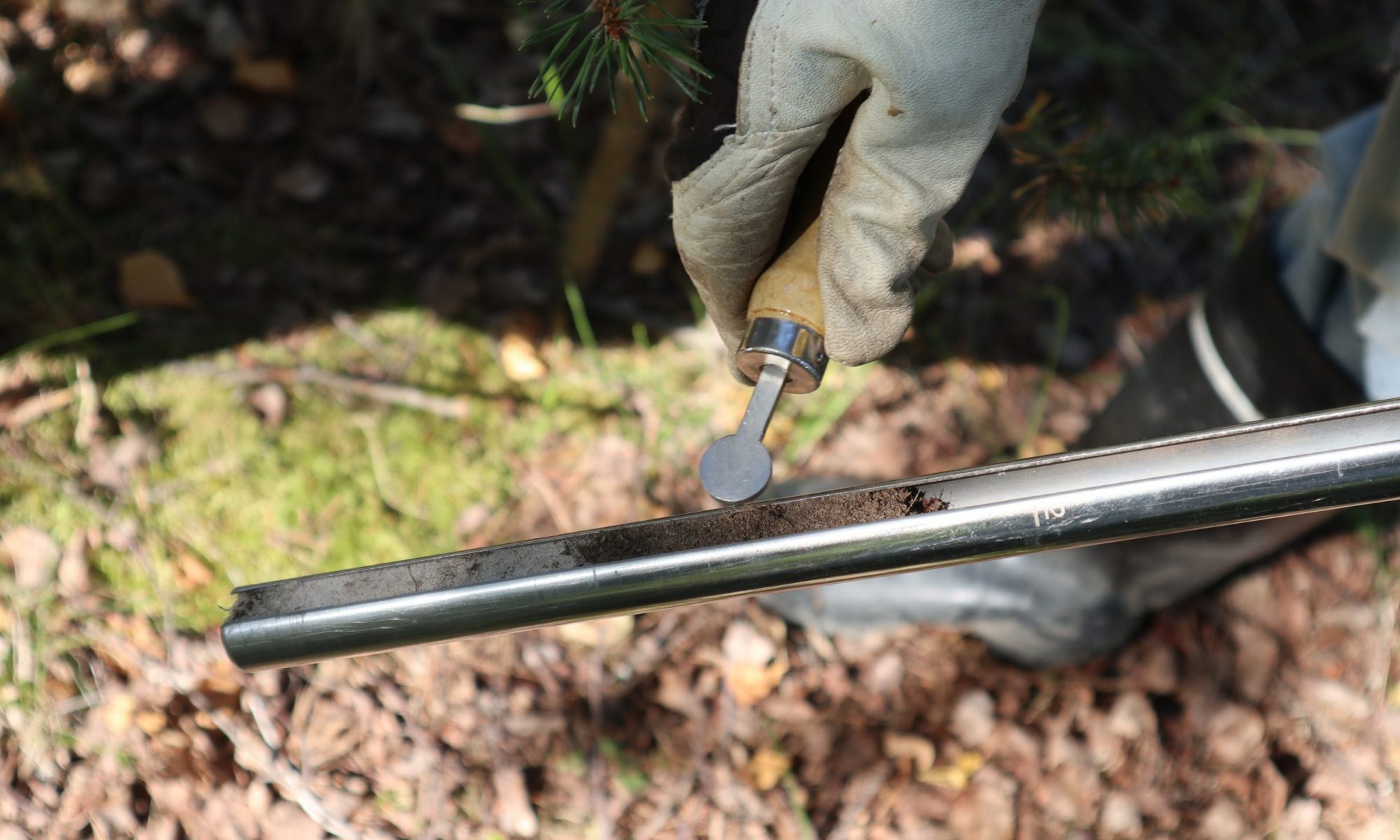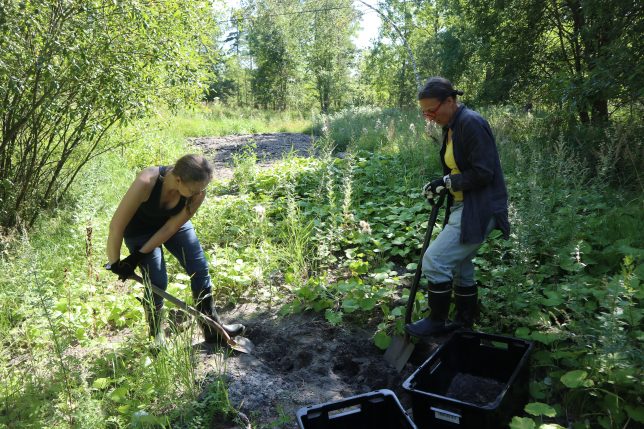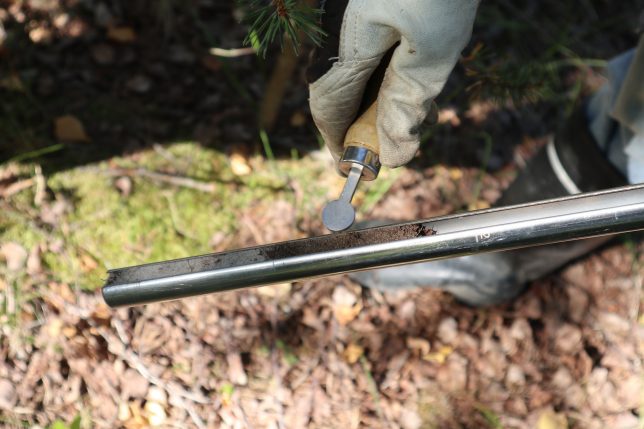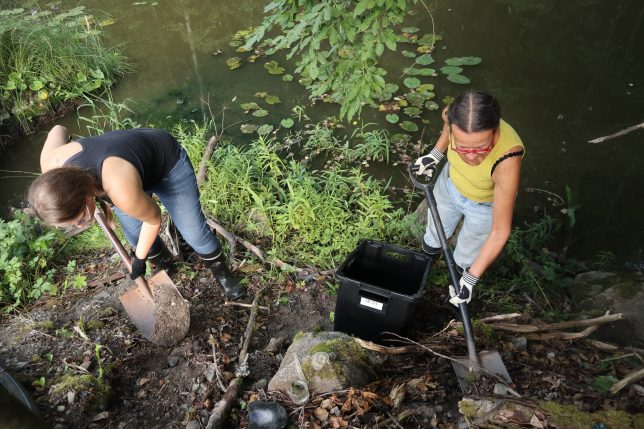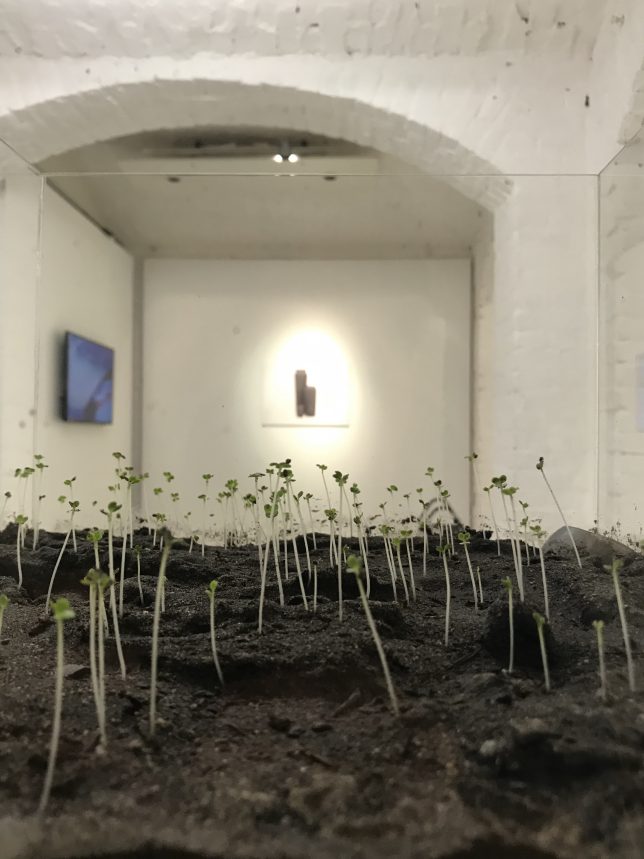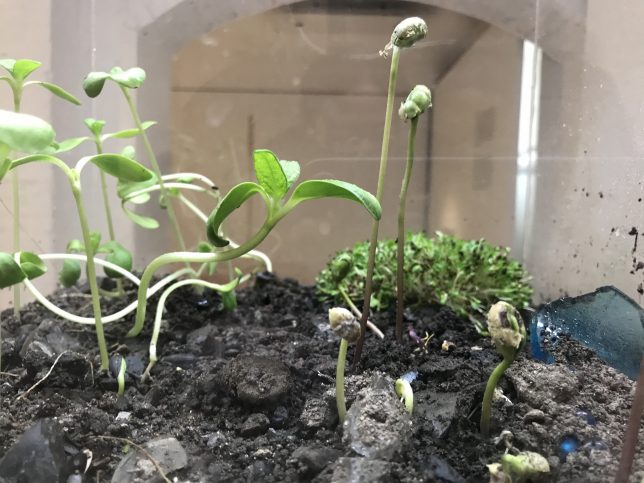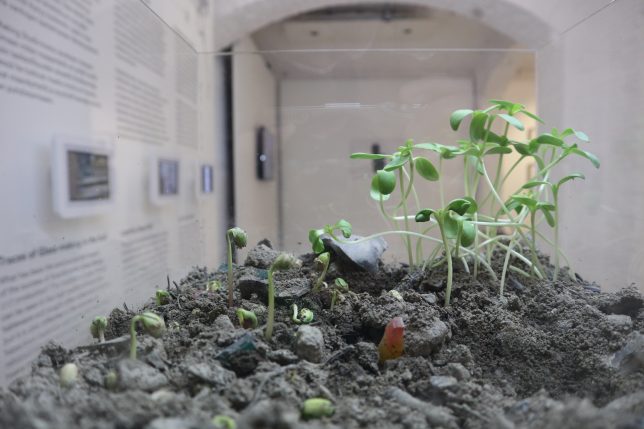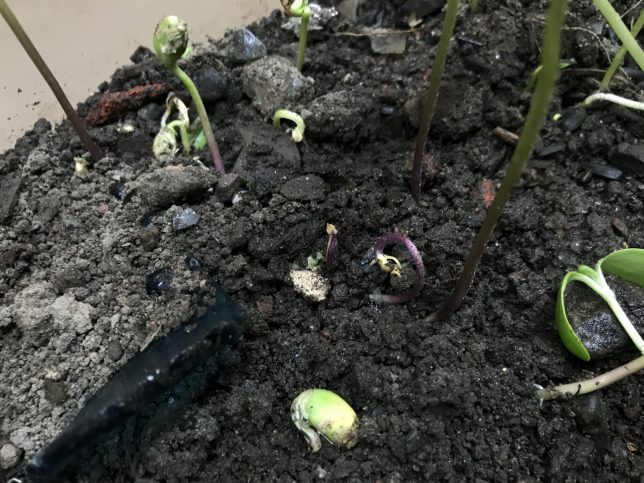The Un/making Soil Communities is an ongoing experimental project that seeks design alternatives to take care of the soil. The project brings into focus the aftermath of the glass industry through speculative and participatory design. Phytoremediation is used to suggest that collaboration with other species might offer solutions for cleaning the polluted soil. In 2018-2019, designers of the Un/Making Studio Åsa Ståhl and Kristina Lindström conducted several participatory workshops in the Kingdom of Crystal, a central site for the glass industry in Sweden. For the Soil Matters exhibition, the Un/Making Studio invited artist-researchers from the Soil Laboratory to explore local environments in the aftermath of glass-making. During the exhibition, the Un/making Soil Communities project expands to the context of the Nuutajärvi Glass Village in Finland.
The Un/Making studio provided the artist-researchers of the soil Laboratory with tools to sample the soil, instructions how to sample and seeds from five different phytoremediative plants. These plants have been selected especially for their ability to extract heavy metals from the soil and store it in their roots.
By looking into traces of heavy metals that the glass industry has left on the local soil, we are reminded how soil communities are affected by human actions. Plants, worms, microbes and bacteria, but also humans, are members of soil communities. Through this project, we reflect our roles in the soil communities. Understanding the consequences of our actions and the potentialities of working with others can help us mitigate the impact of human activity on the soil and its surrounding environment.
In collaboration with the Geological Survey of Finland (GTK)
www.umakingstudio.se/un-making-soil-communities/

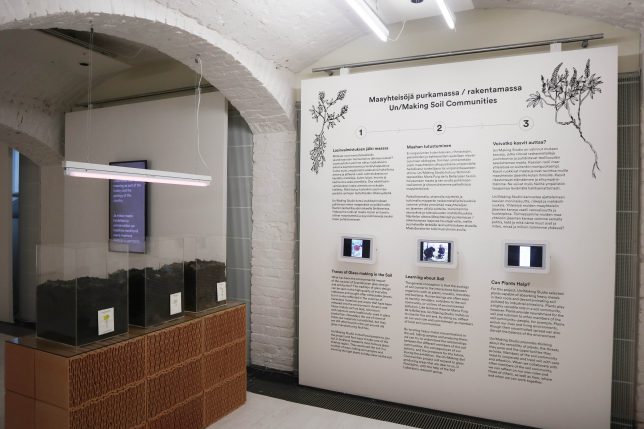
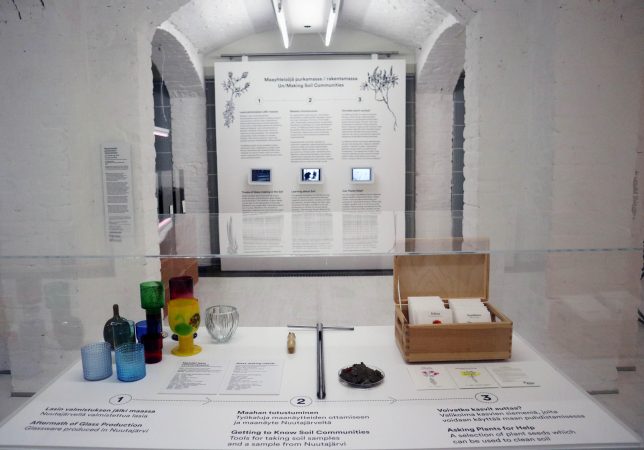
Field Trip to the Nuutajärvi Glass Village, August 2020
What traces from the Finnish glass industry can be found in the soil around the former Nuutajärvi Glass Factory?
With some preliminary studies of intended locations, the research group conducted an expedition to the Nuutajärvi Glass Village. The investigation was led by artist-researcher Riikka Latva-Somppi in collaboration with local glass artist-educator Sara Hulkkonen. Several soil samples were gathered from around the former glass factory area as well as some specific locations of possible contamination.
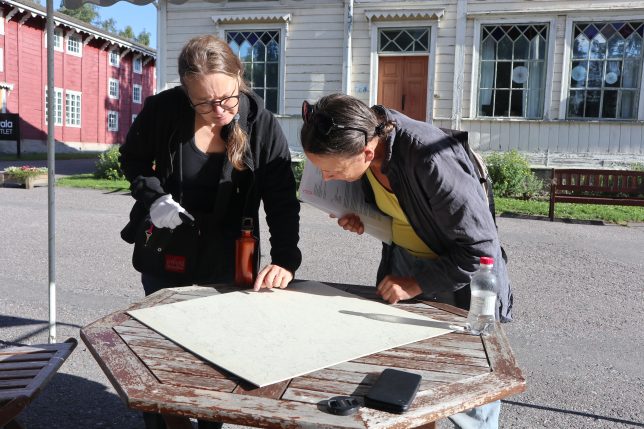
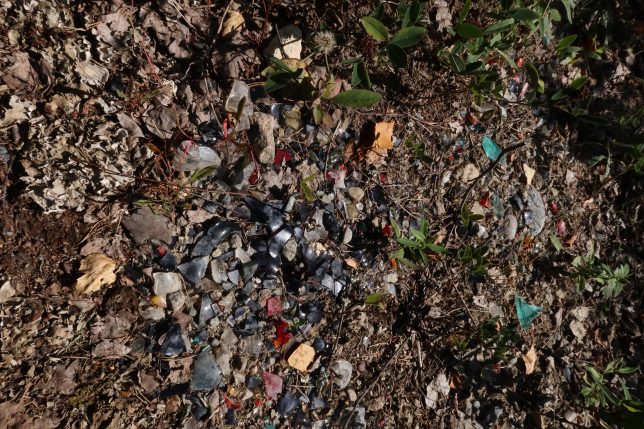
Analysis of Soil Samples
Later, in September, the gathered Nuutajärvi soil samples were scanned by geologist Maarit Saresma (GTK). The analysis shows heavy metal contaminationin the soils that are affected glass-making. Concentrations of lead, arsenic, chromium and cadmium, among others, were higher than the natural threshold.
Based on the scanning results, the research team selected three of the soil samples to experiment with phytoremediation. These samples were gathered by the most recent glass factory Hakahytti, the river bank and by the Pruukinraitti-road. Carefully selected plants, which potentially absorb heavy metals in their roots were sown in the soil.
Scans of soil samples by geologist Maarit Saresma from the Geological Survey of Finland (GTK)
Blue= The measured concentration higher than the threshold value
Orange= The measured concentration exceeds the lower guideline value
Red= The measured concentration exceeds the upper guideline value
Scroll to the right to view full table
| P | S | Cl | K | Ca | Ti | V | Cr | Mn | Fe | Co | Ni | Cu | Zn | As | Se | Rb | Sr | Y | Zr | Mo | Ag | Cd | Sn | Sb | W | Hg | Pb | Bi | Th | U | |
| Natural Concentration | 38 | 31 | 8 | 17 | 22 | 31 | 1 | 0.3 | 0.02 | 0.005 | 5 | ||||||||||||||||||||
| Threshold Value | 100 | 100 | 20 | 50 | 100 | 200 | 5 | 1 | 2 | 0.5 | 60 | ||||||||||||||||||||
| Lower Guideline | 150 | 200 | 100 | 100 | 150 | 250 | 50 | 10 | 10 | 2 | 200 | ||||||||||||||||||||
| Upper Guideline | 250 | 300 | 250 | 150 | 200 | 400 | 100 | 20 | 50 | 5 | 750 | ||||||||||||||||||||
| Hakahytti | <LOD | <LOD | <LOD | 1581 | 4884 | 651 | 31.3 | 1683 | 90 | 3248 | 1.7 | <LOD | 28 | 190 | <LOD | 3.9 | 10.7 | 50.7 | 7.1 | 1189 | <LOD | <LOD | <LOD | <LOD | 119 | <LOD | <LOD | 24 | <LOD | <LOD | <LOD |
| Joen Penkka | <LOD | <LOD | <LOD | 9078 | 8327 | 2383 | 88 | 100 | 616 | 28591 | 9.5 | <LOD | 109 | 409 | 133 | 7.5 | 88.4 | 209 | 14.8 | 168 | <LOD | <LOD | <LOD | <LOD | <LOD | <LOD | <LOD | 848 | 29 | 37 | <LOD |
| Pruukinraitti | <LOD | 897 | <LOD | 10253 | 6789 | 1965 | 52 | 67 | 369 | 23331 | 7.1 | <LOD | 44 | 137 | 34 | 4.5 | 79.2 | 215 | 12.0 | 134 | <LOD | <LOD | <LOD | <LOD | <LOD | <LOD | <LOD | 175 | 26 | 40 | <LOD |
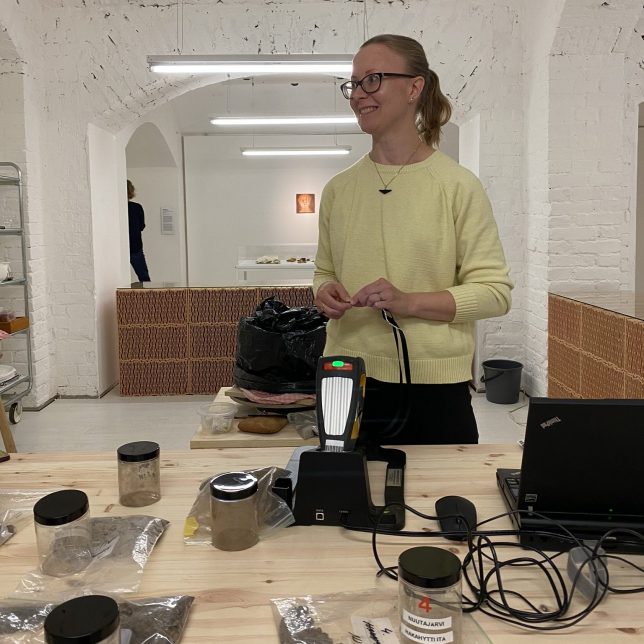
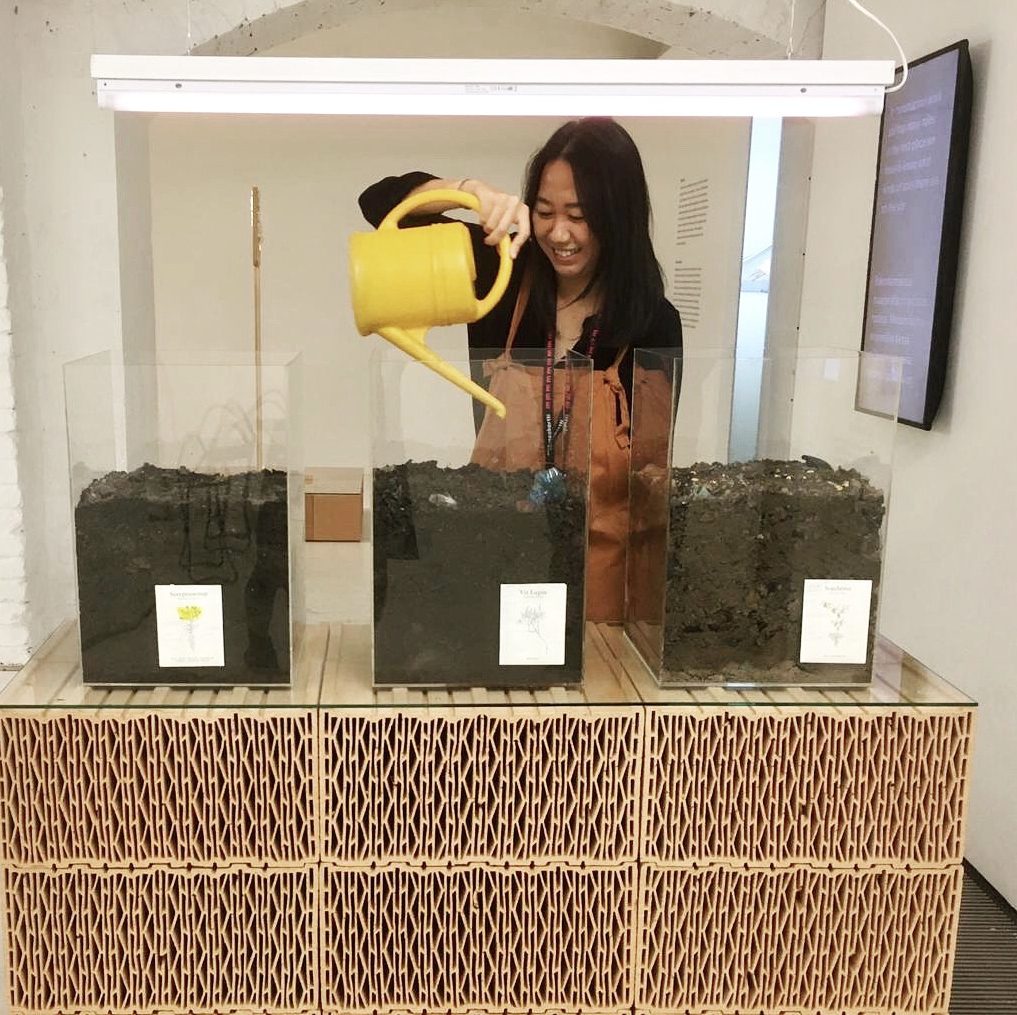
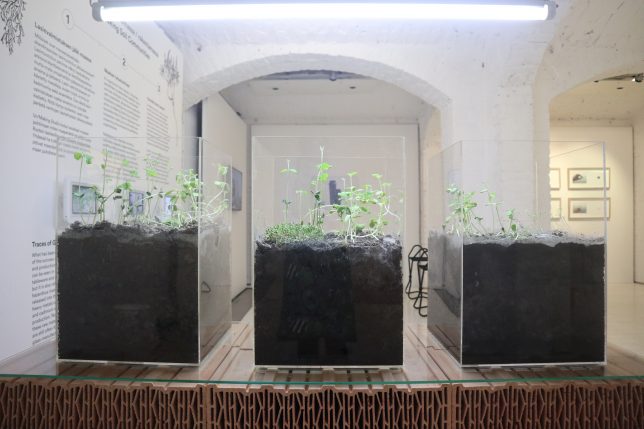
Remediating the Soil
Throughout the exhibition period, the process of germination and growth of the plants can be followed in the Soil Matters exhibition space. This process is further used as a means to analyse whether the plants have accumulated heavy metals. Once the plants are harvested, an additional scanning will be carried out to observe the presence of contaminants.
Hakahytti
Sunflower, Indian mustard
Joen penkka
Sunflower, Soybean, Alfalfa
Pruukinraitti
Sunflower, Soybean
Results of Phytoremediation experiments
An additional scanning session was organised in January 2021 at Aalto University. The event was hosted by the artist-researchers from the Soil Laboratory. Project collaborators, designers of the Un/Making Studio Åsa Ståhl and Kristina Lindström from Sweden were invited to join a shared discussion via Zoom. During the event, phytoremediation plants which had grown in the Nuutajärvi soil were scanned by geologist Maarit Saresma from the Geological Survey of Finland (GTK).
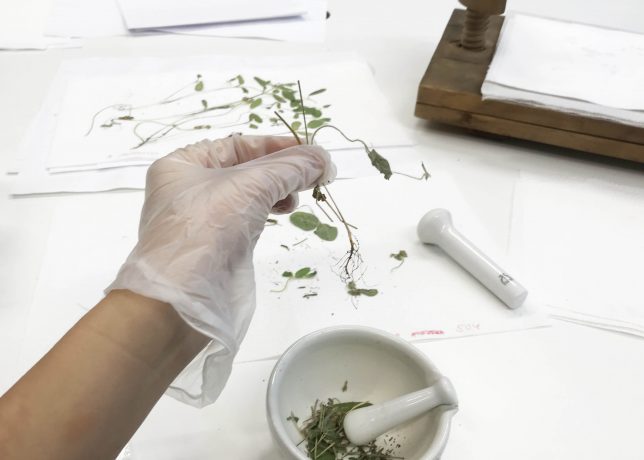
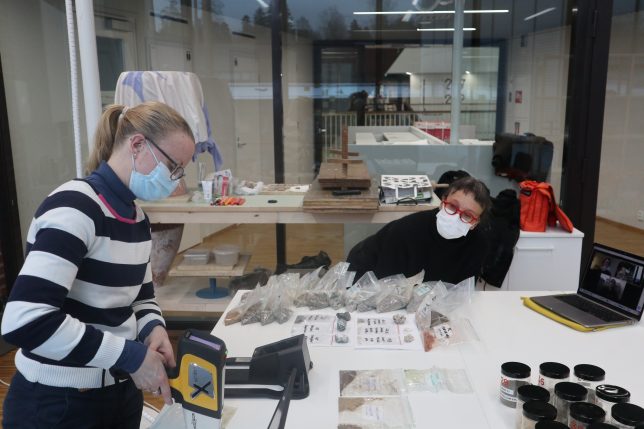
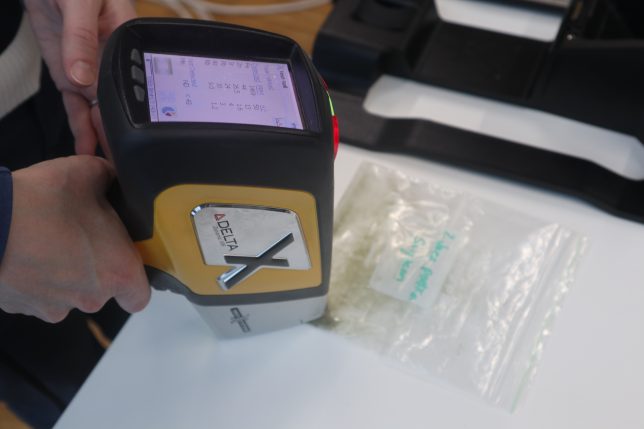
The table shows the heavy metal content of the selected three soil samples. Below each soil analyses is the analyses of the plant grown in the specific soil. The results are tentavive due to the experimental method of using an XRF analyser for plant fibre.
Scans of soil samples by geologist Maarit Saresma from the Geological Survey of Finland (GTK)
Scroll to the right to view full table
| P | S | Cl | K | Ca | Ti | V | Cr | Mn | Fe | Co | Ni | Cu | Zn | As | Se | Rb | Sr | Y | Zr | Mo | Ag | Cd | Sn | Sb | W | Hg | Pb | Bi | Th | U | |
| Hakahytti | <LOD | <LOD | <LOD | 1581 | 4884 | 651 | 31.3 | 1683 | 90 | 3248 | 1.7 | <LOD | 28 | 190 | <LOD | 3.9 | 10.7 | 50.7 | 7.1 | 1189 | <LOD | <LOD | <LOD | <LOD | 119 | <LOD | <LOD | 24 | <LOD | <LOD | <LOD |
| Sunflower | <LOD | 8800 | 4345 | 40171 | 11655 | 223 | 21.2 | 91 | 46 | 491 | <LOD | <LOD | 12 | 206 | 4.6 | 220 | 5.5 | 23.7 | <LOD | 65.8 | 5.8 | 17 | 13 | <LOD | 27 | <LOD | <LOD | <LOD | <LOD | <LOD | <LOD |
| Indian Mustard | <LOD | 6272 | 6284 | 16429 | 5449 | 10667 | 69 | 115 | <LOD | 601 | <LOD | <LOD | <LOD | 43.2 | 2.9 | 48.4 | 3.7 | 6.3 | <LOD | 11.2 | <LOD | 19 | 12 | <LOD | <LOD | <LOD | <LOD | <LOD | <LOD | <LOD | <LOD |
| Joen Penkka | <LOD | <LOD | <LOD | 9078 | 8327 | 2383 | 88 | 100 | 616 | 28591 | 9.5 | <LOD | 109 | 409 | 133 | 7.5 | 88.4 | 209 | 14.8 | 168 | <LOD | <LOD | <LOD | <LOD | <LOD | <LOD | <LOD | 848 | 29 | 37 | <LOD |
| Soybean | <LOD | 3474 | 410 | 21255 | 9030 | 227 | 16.6 | <LOD | 74 | 1772 | <LOD | <LOD | 13 | 84 | 15.4 | <LOD | 9.2 | 27.0 | <LOD | 2.6 | <LOD | 19 | <LOD | <LOD | <LOD | <LOD | <LOD | 40.3 | <LOD | <LOD | <LOD |
| Sunflower | <LOD | 4442 | 4267 | 32992 | 15078 | 781 | 33.3 | <LOD | 53 | 1333 | <LOD | <LOD | 10.1 | 74 | 10.8 | <LOD | 7.7 | 25.5 | <LOD | <LOD | <LOD | 20 | 13 | <LOD | <LOD | <LOD | <LOD | 17.7 | <LOD | <LOD | <LOD |
| Pruukinraitti | <LOD | 897 | <LOD | 10253 | 6789 | 1965 | 52 | 67 | 369 | 23331 | 7.1 | <LOD | 44 | 137 | 34 | 4.5 | 79.2 | 215 | 12.0 | 134 | <LOD | <LOD | <LOD | <LOD | <LOD | <LOD | <LOD | 175 | 26 | 40 | <LOD |
| Soybean | <LOD | 3137 | 455 | 20227 | 9127 | 289 | 10.5 | 11 | 126 | 3428 | 1.2 | <LOD | 12 | 81 | <LOD | <LOD | 16.1 | 41.0 | <LOD | 12.1 | <LOD | 18 | <LOD | <LOD | <LOD | <LOD | <LOD | 18.3 | <LOD | <LOD | <LOD |
| Sunflower | <LOD | 6387 | 3408 | 32885 | 23237 | 208 | 20.7 | <LOD | 107 | 1369 | <LOD | <LOD | 17 | 133 | 5.3 | <LOD | 17.3 | 51.8 | <LOD | 3.9 | <LOD | 18 | 14 | <LOD | <LOD | <LOD | <LOD | 9.5 | <LOD | <LOD | <LOD |
